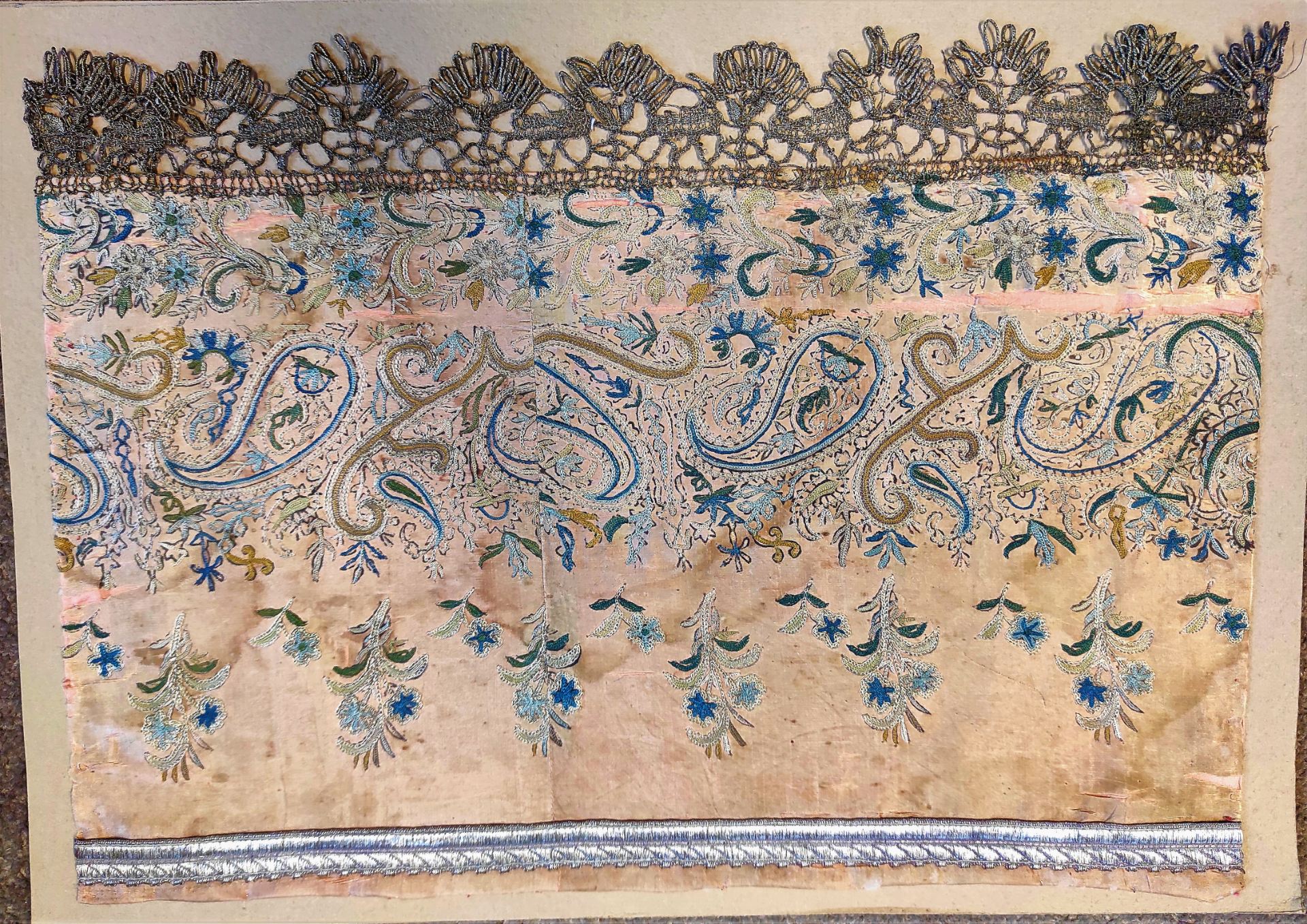Written by Léa Joshi, student intern.
The history of Indian textiles is a very old and rich one. The oldest cotton threads found in India date to c.4000BC and the tradition is still very alive today. The University of Dundee is fortunate to hold some interesting examples, originally donated to the Art College by the Needlework Development Scheme. The NDS was founded in 1934 to collect examples of historic and contemporary embroidery from throughout the world for use in teaching. Its collection was dispersed across Britain after it disbanded in 1961. Most of it is held by the four Scottish Art Colleges.
Unfortunately, little was recorded by the NDS about the Indian pieces we hold, but let’s take a look at them to see what we can learn about this fascinating craft.
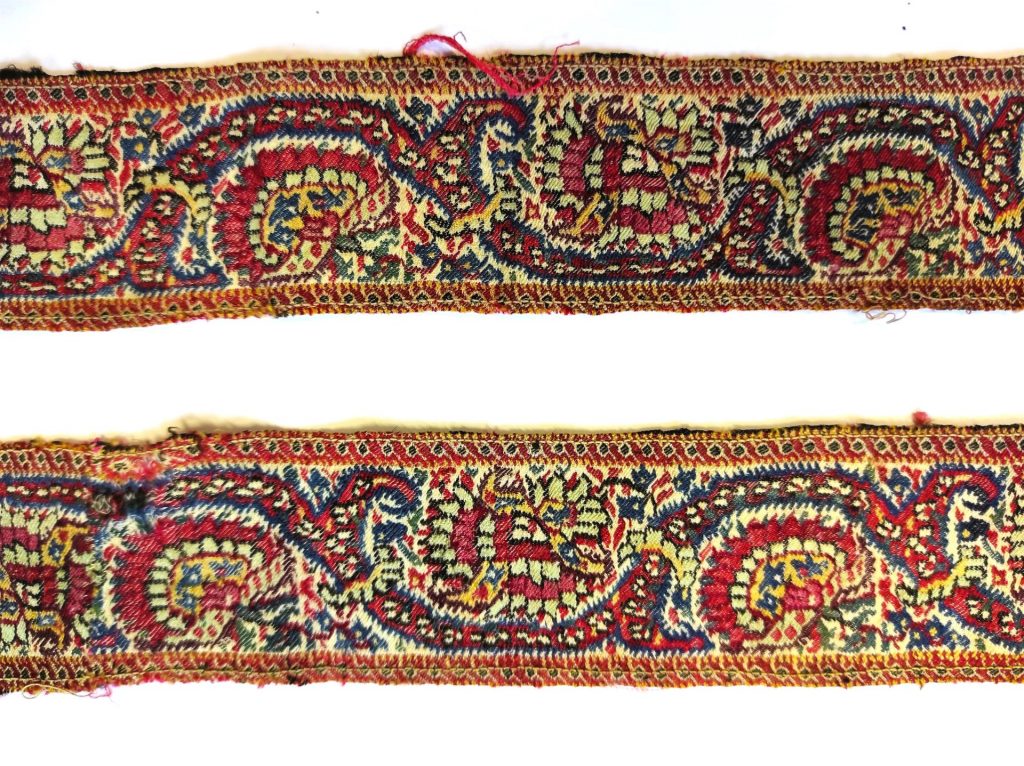
DUNUC ARTS:864
These two strips originally decorated the border of a shawl. This type of clothing, still used today, is rectangular or square and usually worn over the upper body. It comes from the region of Kashmir, where shawls are often decorated with floral motifs woven in a manner similar to embroidery. Small and large flowers are mixed. Generally, the borders of the shawl are separated from the rest of the garment, as in this case.
We don’t know when or where this was made – it was probably in India but such shawls were widely copied elsewhere.
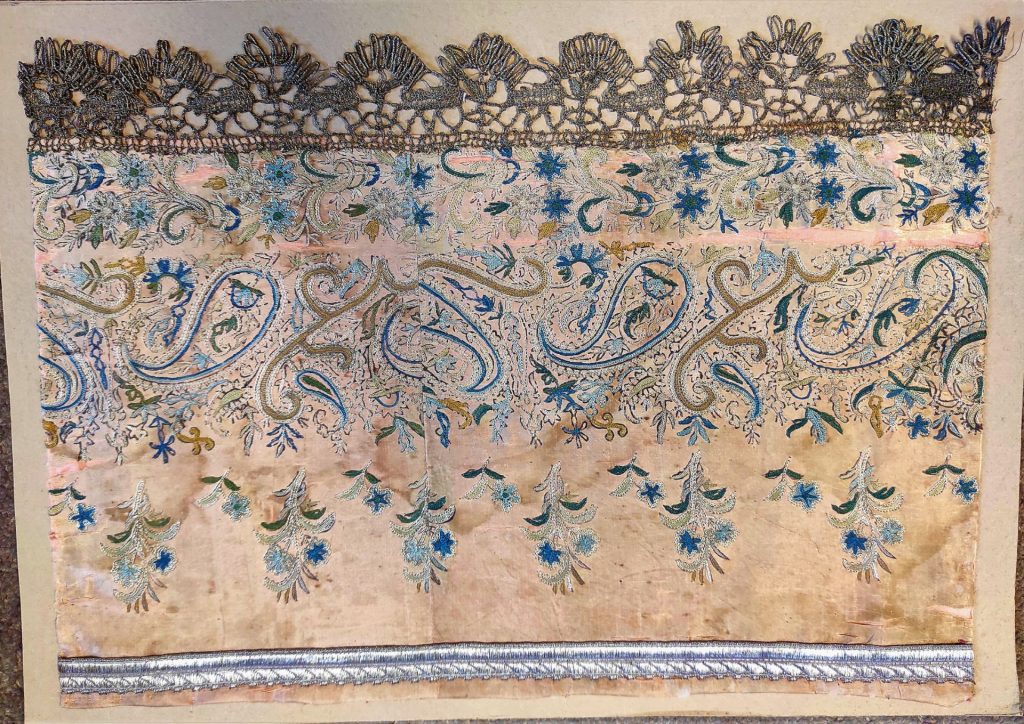
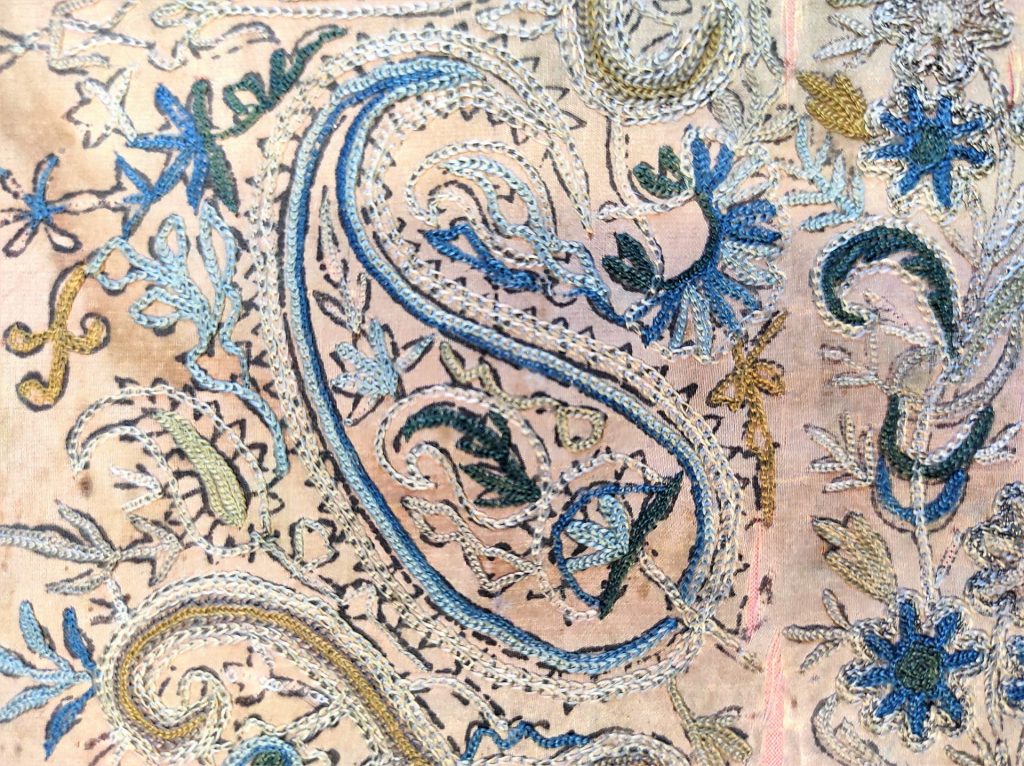
DUNUC ARTS:275
The pattern represented on the top of this border fragment is that of a cypress cane of Kashmir, inspired by a tree commonly found in this area. It’s likely that this piece was also part of a shawl and probably made in the Kashmir region. The tear-drop shape motif became particularly popular when such shawls were exported to Britain, becoming known as Paisley pattern.
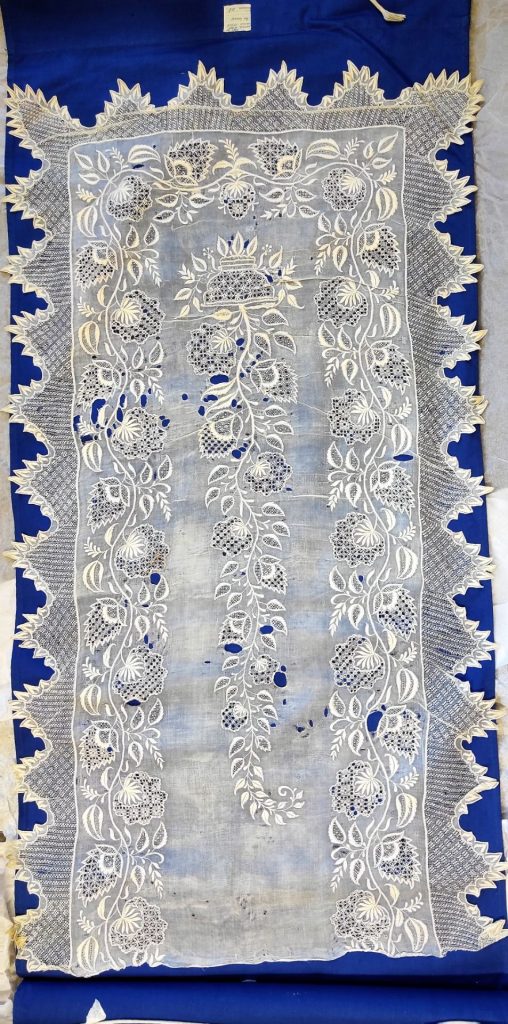
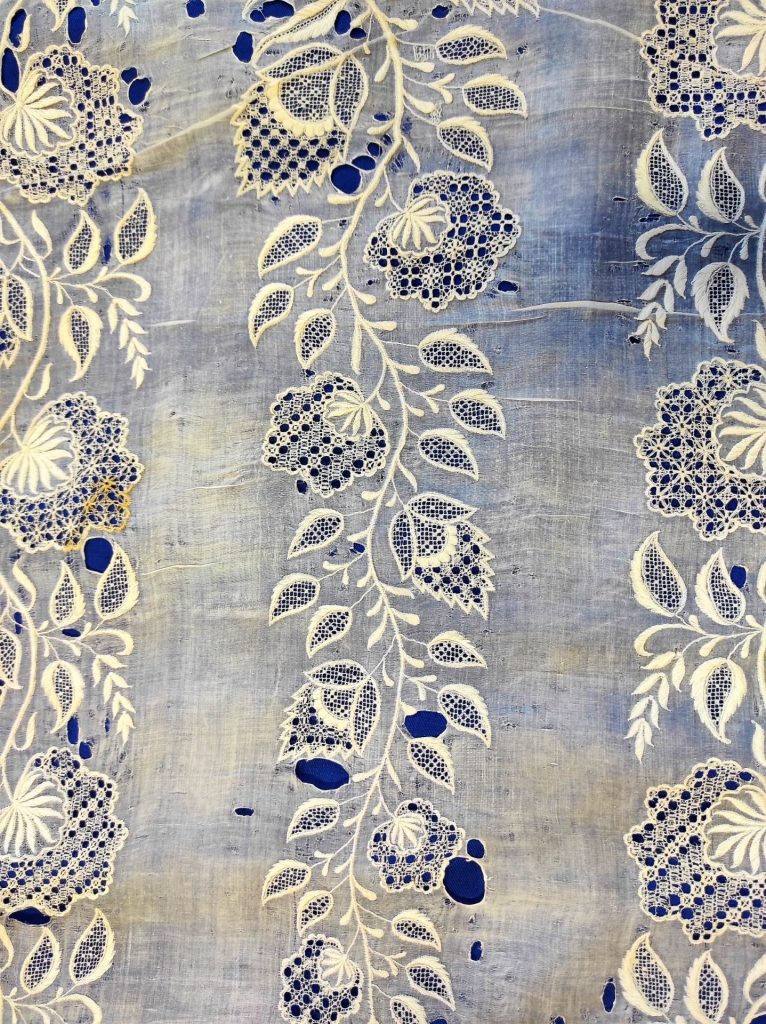
DUNUC ARTS:276
We have more information on this beautiful textile. It is part of a muslin scarf and was produced in the 18th century. We know that it comes from the Punjab region, because of a label saying “phulkari”. This refers to the folk embroidery of Punjab. It means ‘floral work’, but the designs can include geometrical shapes as well, as we can see on this other Phulkari from our collections (DUNUC ARTS:279).
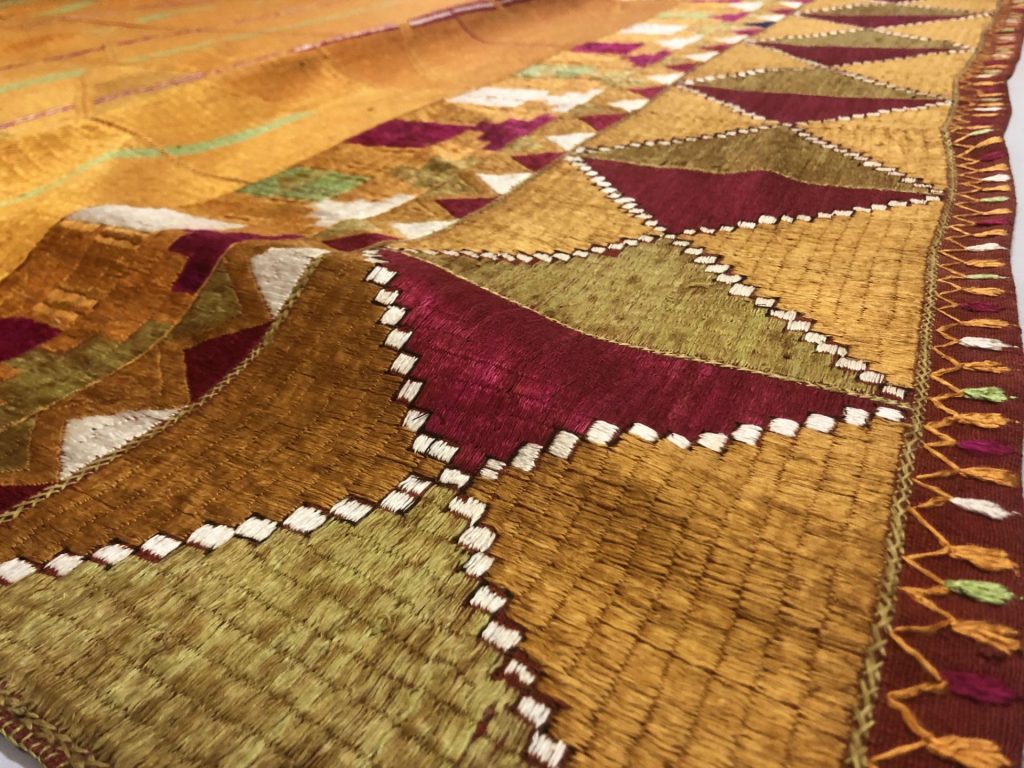
Phulkari embroidery is characterised by the use of darn stitch on the reverse side of the cotton cloth with coloured silken thread. Such textiles are a traditional wedding gift. They continue to be an integral part of Punjabi weddings to this day. This type of clothing is made by women only.
During the British colonial period, the technique was also used for a decorative purpose, as British settlers ordered curtains in this form for their homes.
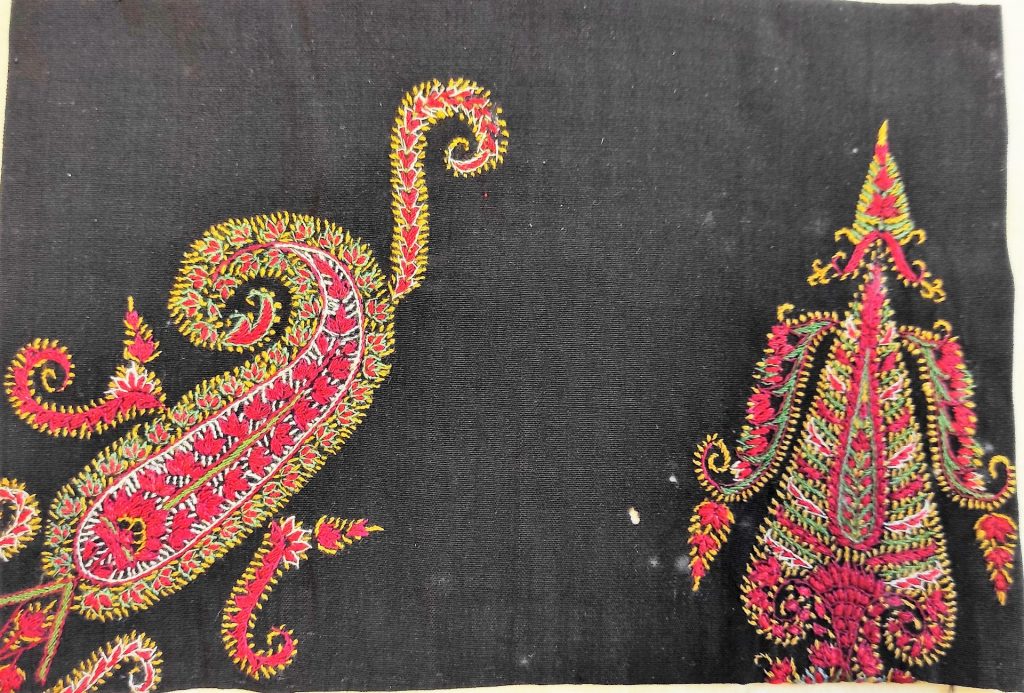
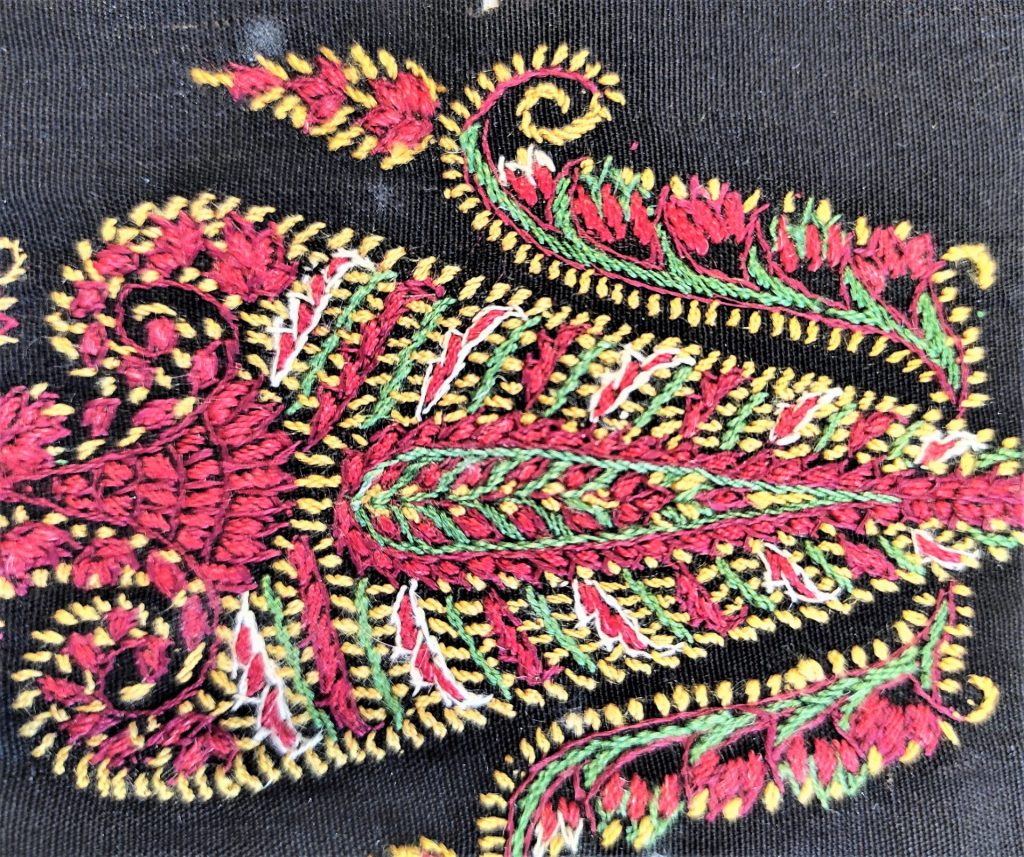
DUNUC ARTS:278
This fragment of textile is from the 19th century. It was made by dyeing and stitching. Throughout their long textile-making history, Indian artists used natural dyes to colour their work following a precise and challenging technique using fixing agents to fix the colours. Here, it is possible that the dark background was not made using these. Indeed, since the arrival of western chemical dyes in the country following British colonisation, those have also been used for Indian textiles.
The specific geographical origin of this textile is not known, but since northwest India is the area most associated with embroidery, we could make the hypothesis that it comes from there.
All these specimens were probably acquired during the colonial period and can tell us both about traditional skills in India and the way such textiles were adapted for western use. If you’re interested in seeing these or any of our textiles, get in touch on 01382 384310 or museum@dundee.ac.uk
